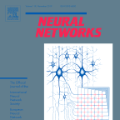Particle detectors based on scintillators are widely used in high-energy physics and astroparticle physics experiments, nuclear medicine imaging, industrial and environmental detection, etc. Precisely extracting scintillation signal characteristics at the event level is important for these applications, not only in respect of understanding the scintillator itself, but also kinds and physical property of incident particles. Recent researches demonstrate data-driven neural networks surpass traditional statistical methods, especially when the analytical form of signals is hard to obtain, or noise is significant. However, most densely connected or convolution-based networks fail to fully exploit the spectral and temporal structure of scintillation signals, leaving large space for performance improvement. In this paper, we propose a network architecture specially tailored for scintillation pulse characterization based on previous works on time series analysis. The core insight is that, by directly applying Fast Fourier Transform on original signals and utilizing different frequency components, the proposed network architecture can serve as a lightweight and enhanced representation learning backbone. We prove our idea in two case studies: (a) simulation data generated with the setting of the LUX dark matter detector, and (b) experimental electrical signals with fast electronics to emulate scintillation variations for the NICA/MPD calorimeter. The proposed model achieves significantly better results than the reference model in literature and densely connected models, and demonstrates higher cost-efficiency than conventional machine learning methods.
翻译:暂无翻译



